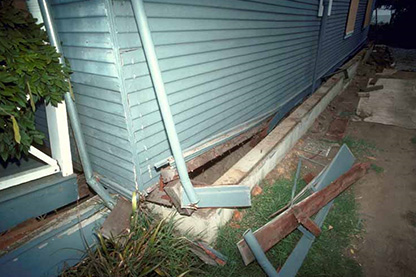In 1989, the magnitude 6.9 Loma Prieta earthquake struck Northern California, leaving 16,000 housing units uninhabitable. According to USGS, nearly 70 percent of the loss of life and property damage due to the Loma Prieta earthquake stemmed from strong ground shaking.
An earthquake generates seismic waves that pass through the ground. As those waves pass near or underneath your house, it can move from side to side and up and down. The shaking a house experiences depends on how far it is from the fault and the soil under and around it.
Seismic waves travel faster through hard rock than through softer rock and sediments like soil and sand. But as the waves pass from harder to softer rocks, they slow and their strength increases, so shaking is more intense where the ground is softer. However, even houses on hard rock, if they are close to the surface rupture, can also experience intense shaking and damage.
How to Prepare A House for Seismic Waves & Ground Shaking
Learn where the active faults are in your area. Then learn about the house’s structural risks and the steps one can take to seismically strengthen their house.
Protecting a house against ground-shaking is generally the least costly retrofit. If the house was built before 1980 and has a raised concrete perimeter foundation and cripple walls, it may sustain less earthquake shake damage if the foundation is bolted and the cripple wall is braced.
But retrofitting does not guarantee a house will come through an earthquake undamaged. To learn more about CEA earthquake policy coverages, please take advantage of our free Training courses. Also, learn more about helping your customer understand the value of a CEA policy.

